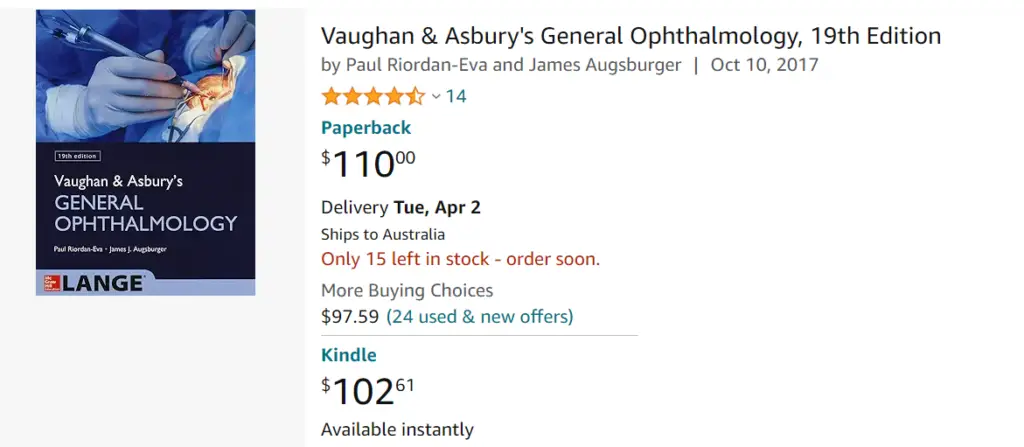Vascular Supply to the eye Diagram

Anatomy: Vascular Supply To The Eye.
Credit: Vaughan & Asbury’s General Ophthalmology.
Also see eye anatomy
Title: The Intricate Vascular Network of the Eye: From the Iris to the Retina
Introduction:
The eye is an exceptionally vascularized organ, with a complex network of blood vessels that supply the various anatomical structures critical for vision. This vascular system ensures the delivery of oxygen and nutrients while also removing metabolic waste. Knowledge of ocular vascular anatomy is vital in understanding and treating various eye diseases.
Vascular Supply to the Eye: An Overview
1. Anterior Segment:
- Anterior Ciliary Vessels: These vessels arise from the muscular branches associated with the rectus muscles and are responsible for supplying the anterior segment of the eye, particularly the conjunctiva and sclera. They also contribute to the formation of the major arterial circle of the iris.
- Major Arterial Circle of the Iris: Situated in the ciliary body, this arterial circle is a crucial supplier of blood to the structures of the anterior segment. It is formed by anastomoses between the anterior ciliary arteries and the long posterior ciliary arteries.
- Minor Arterial Circle of the Iris: Located closer to the pupillary margin within the iris stroma, the minor arterial circle derives from the major circle and further supplies blood to the iris.
- Vessels of the Ciliary Body: The ciliary body is supplied by the major arterial circle and branches that emanate directly from the long posterior ciliary arteries.
- Conjunctival Vessels: These provide blood to the conjunctiva, the mucous membrane covering the front of the eye and lining the inside of the eyelids.
- Episcleral Vessels: They lie beneath the conjunctiva and are involved in the vascular supply of the sclera.
2. Posterior Segment:
- Choroidal Vessels: The choroid, which lies between the retina and the sclera, has an extensive vascular network primarily supplied by the short posterior ciliary arteries. These vessels provide the outer retinal layers with nutrients via the choriocapillaris.
- Retinal Vessels: The inner layers of the retina receive their blood supply from the central retinal artery, a branch of the ophthalmic artery that enters the eye with the optic nerve. The central retinal vein is responsible for draining the deoxygenated blood from the retina.
3. Additional Ocular Vascular Structures:
- Long Posterior Ciliary Artery: These two arteries, one on each side of the eye, run forward between the sclera and the choroid to provide blood to the iris and ciliary body and contribute to the major arterial circle of the iris.
- Short Posterior Ciliary Arteries: Multiple short arteries pierce the sclera around the optic nerve and supply the choroid and optic disc.
- Central Vessels of the Retina: The central artery and vein of the retina pass through the optic nerve and are critical for the vascularization of the inner retinal layers.
- Pial Vessels: These vessels run along the surface of the optic nerve, supplying blood to its sheaths and contributing to the blood supply of the optic nerve head.
4. Venous Drainage:
- Vortex Veins: These veins drain the choroid and carry deoxygenated blood away from the eye, eventually emptying into the superior ophthalmic vein. Typically, there are four to six vortex veins located equidistant around the eye, and they play a vital role in the venous circulation of the ocular structures.
- Central Retinal Vein: It drains blood from the retinal circulation. This vein exits the eye in parallel with the central retinal artery, within the optic nerve, before joining the venous circulation.
- Episcleral and Anterior Ciliary Veins: These veins are responsible for the venous drainage of the anterior segment, including the conjunctiva, sclera, and structures supplied by the anterior ciliary arteries. They ultimately drain into the ophthalmic vein.
Clinical Relevance:
The vascular supply of the eye is essential not only for maintaining ocular health but also for understanding the pathophysiology of various ocular diseases. Abnormalities in the ocular blood vessels can lead to serious conditions such as:
Glaucoma: Increased intraocular pressure can affect the blood flow to the optic nerve, potentially leading to optic nerve damage and vision loss.
Diabetic Retinopathy: Prolonged hyperglycemia can damage the retinal vessels, causing them to leak or become blocked. This can result in ischemia and the proliferation of new, fragile vessels that are prone to hemorrhage.
Age-Related Macular Degeneration (AMD): Changes in the choroidal blood vessels can lead to the dry form of AMD, while abnormal growth of new blood vessels (choroidal neovascularization) characterizes the wet form of AMD, leading to vision loss.
Retinal Vein Occlusion: Blockage of the retinal veins can cause blood and fluid to back up in the retina, leading to swelling, hemorrhage, and potentially, vision loss.
Retinal Artery Occlusion: Blockage of the retinal artery can result in sudden, painless vision loss due to the lack of oxygen to the retina.
Conclusion:
The vascular supply to the eye is a testament to the intricate design and complexity of human anatomy. Each vessel plays a specific role in maintaining the eye’s function, and the interdependence of these vessels is crucial for normal vision. Understanding this vascular network is essential for diagnosing, managing, and treating ocular conditions. Advances in medical imaging have allowed for greater visualization and study of ocular blood vessels, leading to improved outcomes for patients with ocular vascular diseases.
For a comprehensive understanding of the vascular supply to the eye and its clinical significance, resources such as “Vaughan & Asbury’s General Ophthalmology” are invaluable. This text provides detailed descriptions, illustrations, and clinical correlations that are indispensable for medical professionals, students, and anyone interested in ophthalmology.
Note: This article provides an overview. For specific details and the most updated information, readers should refer to authoritative ophthalmology texts like “Vaughan & Asbury’s General Ophthalmology.”

Discover more from An Eye Care Blog
Subscribe to get the latest posts sent to your email.

You must be logged in to post a comment.